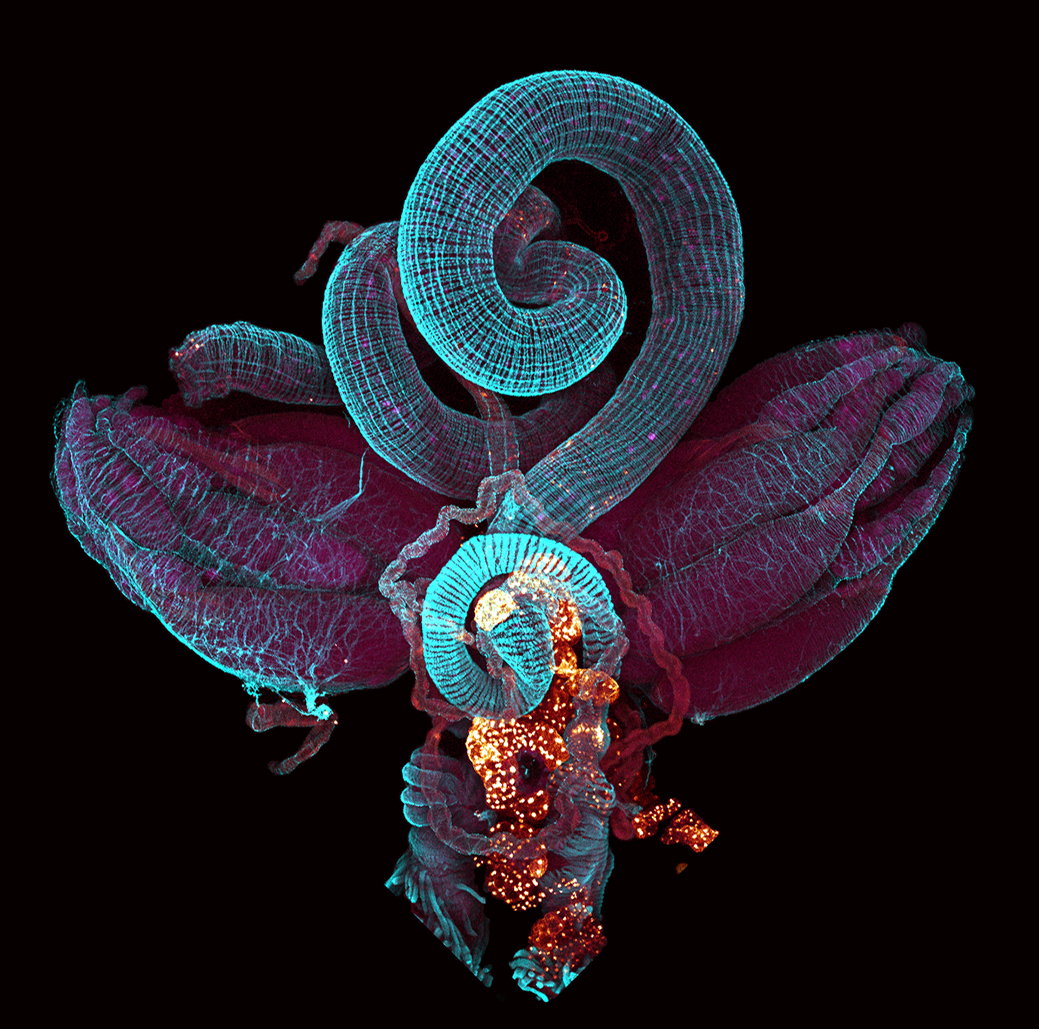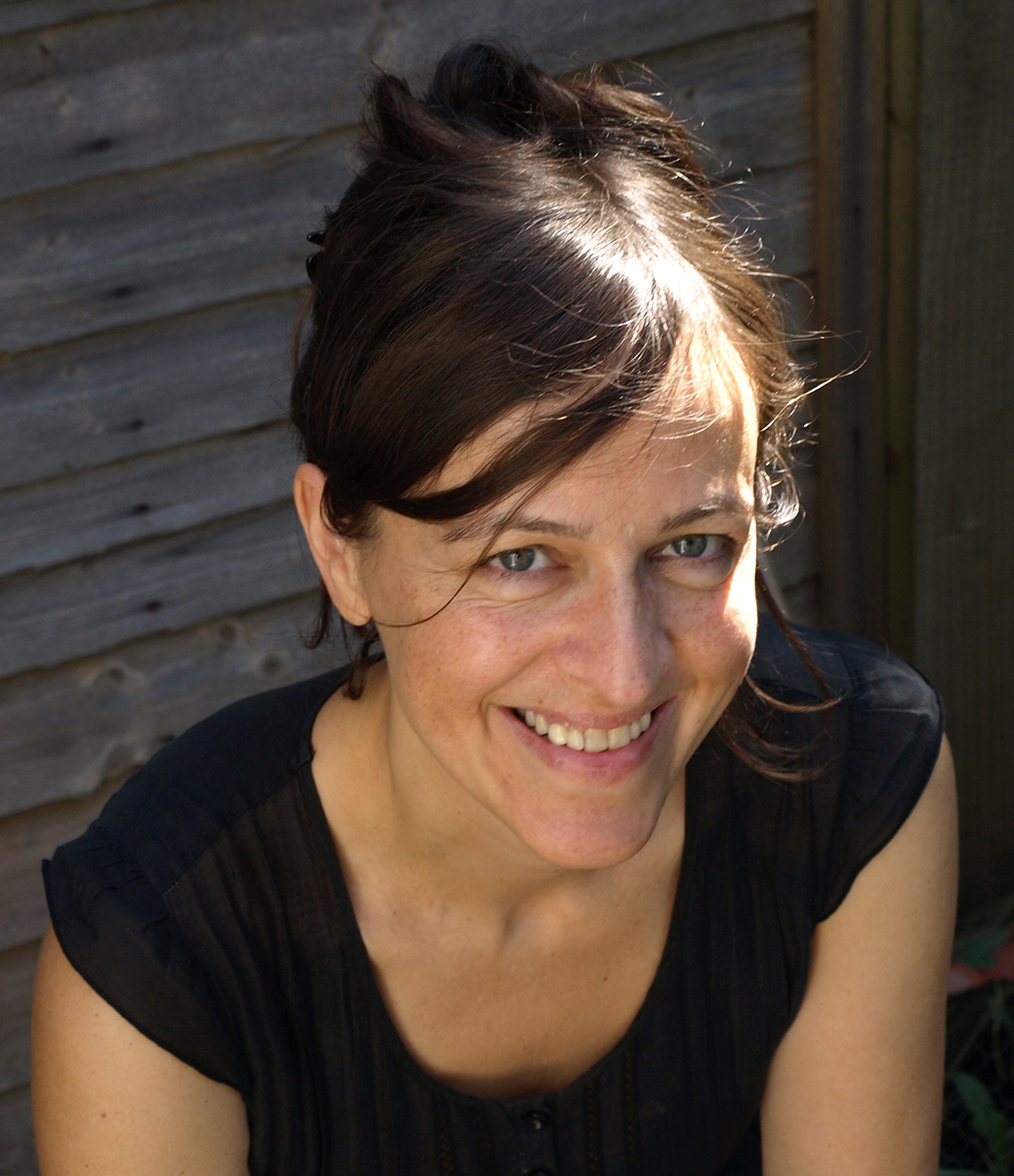An interview with Irene Miguel-Aliaga
Posted by Journal of Cell Science, on 6 October 2015
This interview first featured in the Journal of Cell Science and is part of their interview series Cell Scientists to Watch
Irene Miguel-Aliaga left sunny Barcelona to pursue a PhD at Oxford University in the laboratory of Kay Davies. She did her postdoctorate at Harvard University in Stefan Thor’s lab, and briefly relocated with him to Sweden before coming back to the UK. She continued her postdoctoral work and developed her current research interests as a Marie Curie Fellow in the lab of Alex Gould at the National Institute for Medical Research in London. She established her own lab at the University of Cambridge in 2008, thanks to a Wellcome Trust Career Development Fellowship. In 2012 she moved to London and is currently a Programme Leader at the Medical Research Council Clinical Sciences Centre and a Reader at Imperial College London. Irene was elected to the EMBO Young Investigator programme and holds an ERC Starting Grant. Her lab investigates how gut cells maintain homeostasis and communicate with cells of other tissues and organs.
What motivated you to become a scientist?
I wasn’t one of those children who dissected bugs in their back garden at the age of two. Depending on the day, I wanted to be a vet, an astronaut or a travel agent like my parents. But somebody gave me Carl Sagan’s ‘Cosmos’ for Christmas, and then there was this TV series with lizard aliens that invaded the Earth. They persecuted scientists and the scientists organised themselves against the lizards and overcame the occupation by studying the lizards’ biology and working out their weaknesses. I think maybe the two of them synergised and turned me into a biologist rather than into Brian Cox.
Your research focuses on the brain–gut interface and the cross-talk between the different organs. What are the specific questions that your group is currently trying to answer?
We’re interested in exploring ‘gut intelligence’. The specific questions are about how the gut senses and responds to nutrients or signals from other cells, and about the plasticity of the gut itself – what it responds to and why it matters.
And now you’re also looking at differences between the sexes?
Yes, we’ve been working on sex differences in the intestinal epithelium. Flies can have male or female guts, and the difference is not only developmental – it can be reversed in adult flies. I think it is really fascinating that an adult somatic organ knows its sex and that this matters to the fly!
Of the cell biology methods that you use, which one would you say is the trickiest?
We used to tackle very developmental questions. I found that in development, everything was more black and white – you mutate a gene and end up with no wings. But as soon as you start addressing metabolic or behavioural questions, your n numbers have to become much larger, and you need to control for all sorts of variables such as background effects. I think that has been the challenge for us: these days, it’s harder to persuade ourselves that we’re seeing a real phenotype and to distinguish cause from effect.
Are there any new techniques that you’re thinking of adapting for your research?
I try to think of questions first, and then think of what techniques I need to address them. Otherwise it’s easy to get distracted and end up doing things because you can, rather than because they are important.

The digestive and reproductive systems of an adult female Drosophila. Image taken by Paola Cognigni.
What were the biggest experimental roadblocks that you faced and how did you deal with them?
I think sometimes the roadblocks are your own set of preconceptions. Human nature means that, even if we try not to be, we tend to be too hypothesis driven. You have this preconception of how things are going to work. And then sometimes what happens is you do the experiments and you think the experiments are not working, but in fact they are working, they’re just telling you that what you were thinking was wrong. When that happens you just need to take a step back and say “look, I was probably too dogmatic or too one-dimensional in my approach”. We underestimate the value of negative results.
How do you establish your collaborations?
By getting overexcited about new results, talking to everyone willing to listen about them and often presenting unpublished work in progress at meetings. I like to meet scientists with different backgrounds, think of problems together and collaborate to see what we can do about them.
So you would say it’s good to be open?
I hope so. It is true that there is increasing competition and I know that some people in my lab don’t feel particularly comfortable presenting unpublished data. Perhaps we have been lucky, but so far it has definitely been beneficial.
What challenges did you face when starting your own lab that you didn’t expect?
There wasn’t really a very sharp change in any way, because my lab was pretty small until fairly recently, so it was a natural continuation of a postdoc. I’ve got children now, and I probably underestimated the amount of work that it would be. I always thought I’m very good at multitasking, so a couple of children are just a couple more things on your to-do list, when they’re in fact a (welcome) life changer. The challenge now is to get to do everything, including getting a few hours’ sleep a day. But we’re all still alive [laughs], so it seems doable.
Do you think taking part in science outreach events should be more of a priority for scientists?
From a social perspective, it’s our responsibility, but I also do it because it’s fun. It can also be extremely useful for your research: there’s nothing like talking to lay people to help you see the wood for the trees. Children are a great source of scientific questions too – my three-year-old daughter has been wondering why we stop growing, and what the differences between being dead and alive are. I may let her write my next grant proposal!
Since you left Spain, you have worked in the UK, US and Sweden. What challenges have you faced as a scientist when working in different countries?
I found it very stimulating and the experience made me more adaptable, both personally and scientifically. There are some differences, but at the end of the day, the scientific method is the scientific method and what changes is what different scientific environments perceive as interesting or important. So the only challenges are logistics. I remember moving CDs and books around. These days it’s easier because you just take your iPad.
I asked earlier what motivated you to become a scientist. What is your motivation now?
Surprise. A taste for the unexpected. I like it when we get weird results, and when, two years down the line, you find yourself working on something that you never thought you’d be working on. A passion for scientific pursuit often provides consistent yet intermittent reward – probably a good recipe for long-term happiness.
Could you tell us something about yourself that people wouldn’t know just by looking at your CV?
I failed my driving test nine times and I regularly scratch my car, so I guess I live up to the stereotype of an absent-minded scientist!
Also watch this additional short clip:



 (7 votes)
(7 votes)